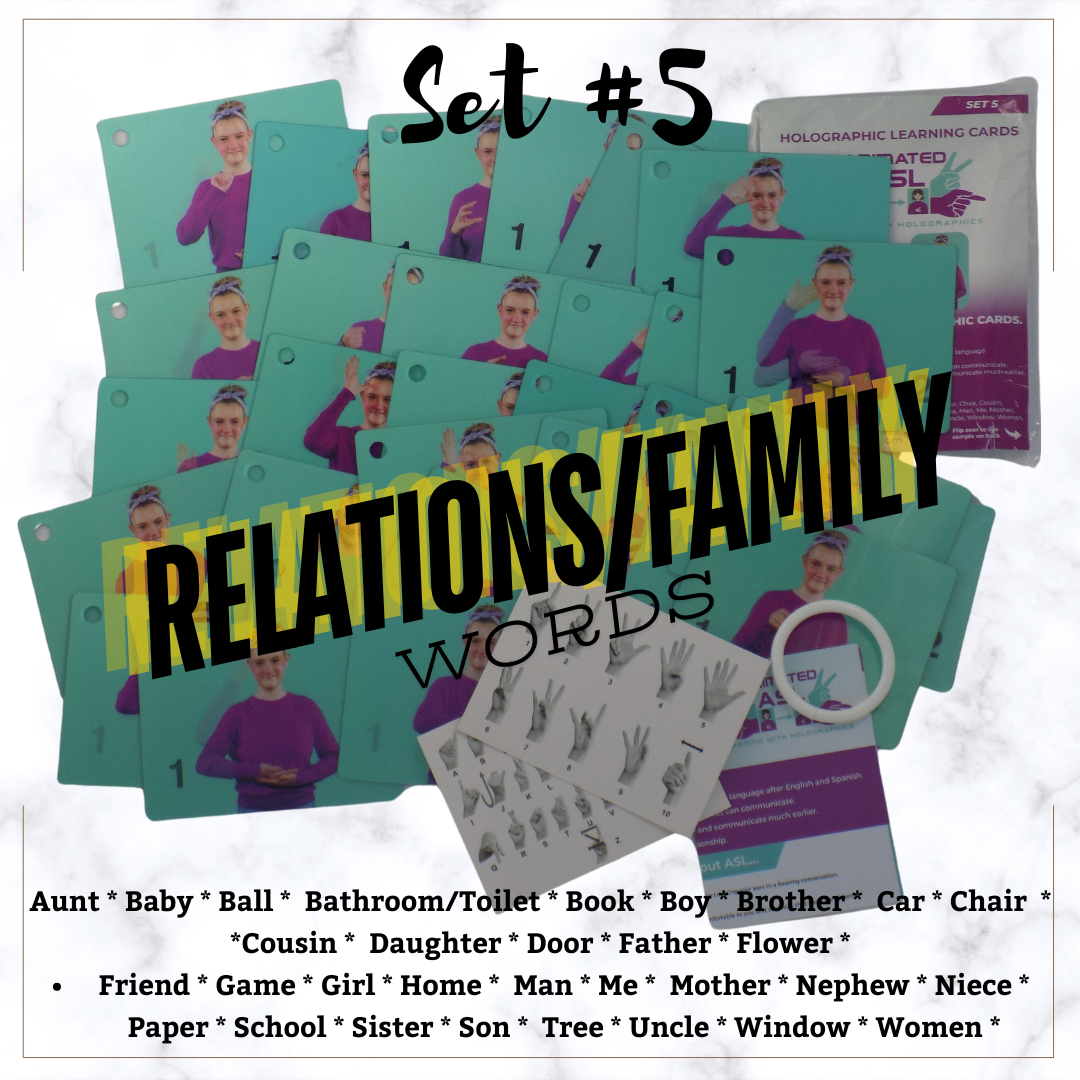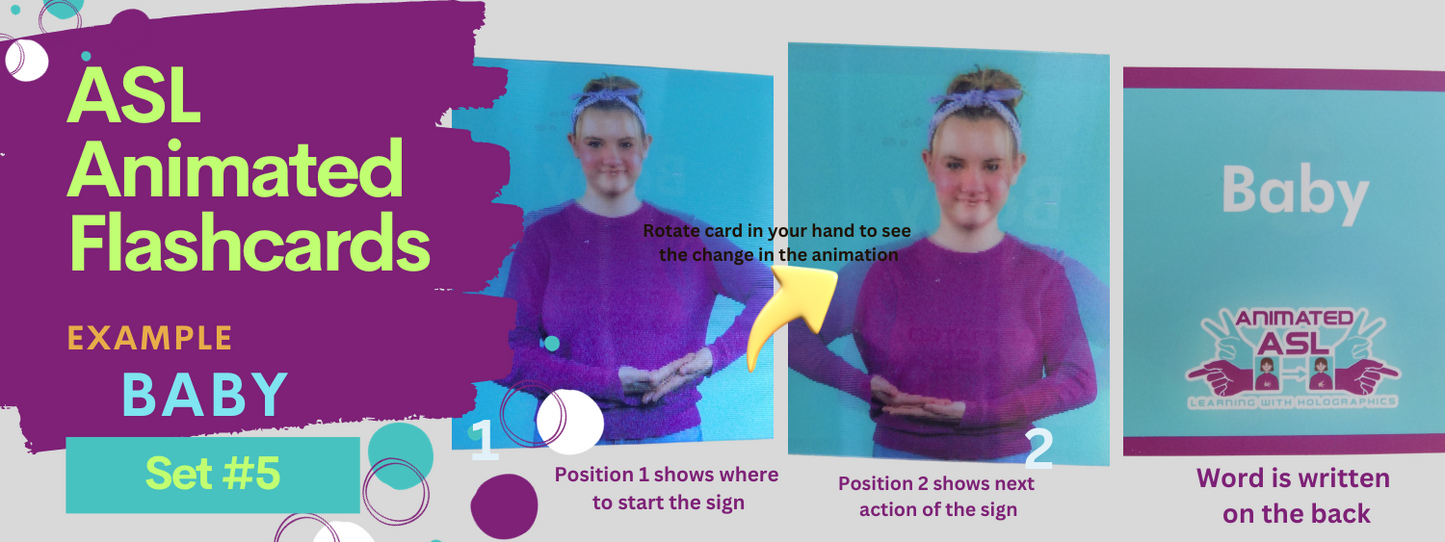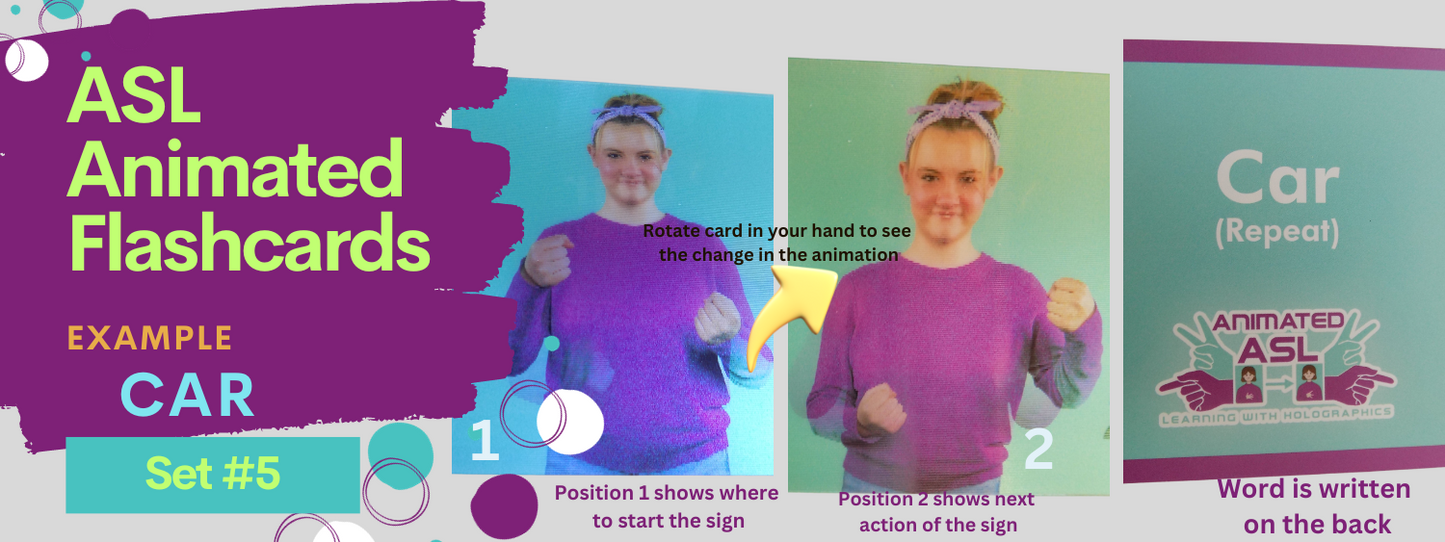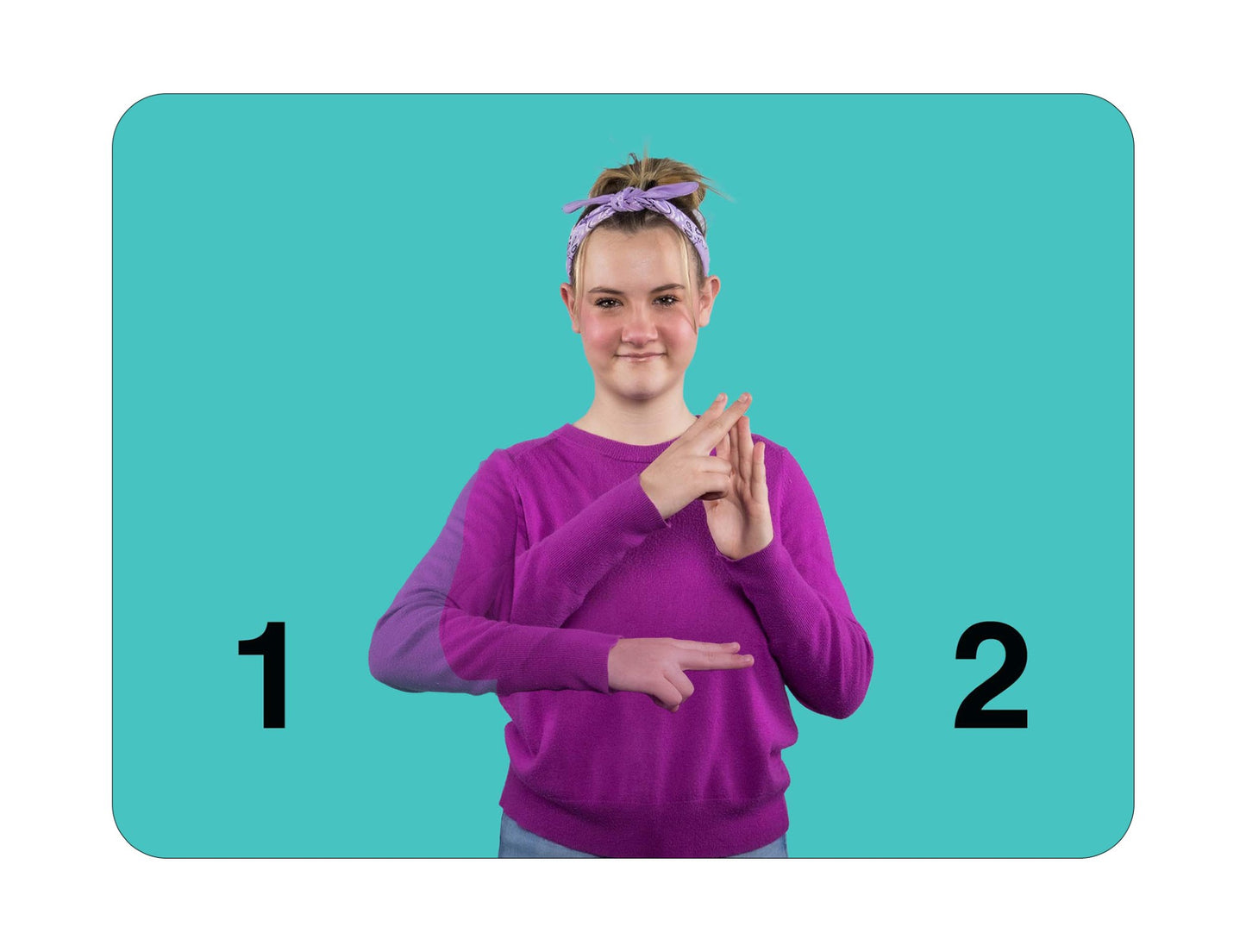My Store
Animated ASL Flashcards SET #5 - Relations/Family- Animated Holograph Flashcards to learn ASL
Animated ASL Flashcards SET #5 - Relations/Family- Animated Holograph Flashcards to learn ASL
Couldn't load pickup availability
Set 1 has the following Animated Cards- 25
Aunt * Baby * Ball * Bathroom/Toilet * Book * Boy * Brother * Car * Chair * *Cousin * Daughter * Door * Father * Flower * Friend * Game * Girl * Home * Man * Me * Mother * Nephew * Niece * Paper * School * Sister * Son * Tree * Uncle * Window * Women *
Also includes- BONUS- Non animated- 1-10 and A-Z.
What is unique?
When you move the animated cards back and forth and you'll see the action needed to create the proper ASL sign. Use these flashcards to learn the sign. This pack has Verb and action words to help with learning.
Introducing our animated ASL flashcards - a truly extraordinary tool for learning American Sign Language! Designed with lenticular printing technology, these flashcards bring your learning experience to life, providing a dynamic and engaging way to master ASL vocabulary.
Why learn ASL?
- Sign language is now considered the third most used language after English and Spanish.
- Children or adults with low-functioning capabilities can communicate.
- Babies and toddlers can learn it quite easily and communicate much earlier.
- Parents and children will have a closer relationship.
Things you should know about ASL...
- Eye contact.
- Don't turn away from someone signing to you. It is like covering your ears in a hearing conversation.
- Use whichever is your dominant hand and most comfortable to you and stay with that hand consistently.
- The area just above the head, down to just below the waist and out to the left and right sides with a com-
- ASL (American Sign Language) vs SEE (Signing Exact English).
- SEE signing is used mostly in school when teaching students the correct grammatical way to speak and write. Every word is signed. With ASL, many words like is, are, and the are not used and the words are signed in a different order, similar to a foreign language. Please do not think this is the only correct way to sign a word. Depending on what part of the country you live in, the signs may be a little different, sort of like an accent. Signs are not the same all over the world. These are for the U.S.
There are 5 parameters:
- Hand shape: Pay close attention to your hand shape. Some signs can have a completely different meaning with a slight movement.
- Location: This refers to the place the sign is located in the signing space. The same hand sign can have completely different meaning when used in a different space.
- Palm Orientation: Palm up or down, palm facing out, in, horizontal, palm faces left or right.
- Expression/non-manual signals: Your facial expression means everything. If you're mad, show an angry face.
- Movement: In a circle, forward, backward, back and forth, up and down, tapping.
Share















